Since finding Salares Norte in the Atacama region of northern Chile in 2011, Gold Fields (NYSE: GFI) has carved out a resource from the project’s two orebodies of 3.66 million oz. gold and 49.46 million oz. silver.
The South African miner expects to finish a feasibility study on the open-pit project before year-end. Gold Fields has budgeted US$83 million for drilling during the feasibility study, and exploration for 20 km around the project.
Interim results of the feasibility study suggest project capital of US$850 million, annual production of 345,000 equivalent oz. gold at all-in sustaining costs of US$575 per oz., and yearly throughput of 2 million tonnes. The mine life is projected at 10 years.
The findings are based on the most recent resource estimate of 23.3 million tonnes grading 4.89 grams gold per tonne and 66 grams silver per tonne — 95% of which is in the indicated category. The company plans to update the resource along with the feasibility study, which is due later this year.
Salares Norte’s two orebodies — Brecha Principal and Agua Amarga — are 500 metres apart, and the near-surface mineralization is contained in a high-sulphidation, epithermal system, hosted mainly by a breccia complex along two andesitic and dacitic volcanic domes. Most of the mineralization is oxidized, and the sulphide mineralization contains pyrite.
The high-grade project sits in the northern part of Chile’s Maricunga belt at elevations of between 4,200 metres and 4,500 metres.
“Salares Norte could well be one of many promising discoveries in the area — the tip of the iceberg,” Max Combes, the project director and country manager, writes in an email, adding that it is probably the only project Gold Fields owns from its greenfields portfolio that has graduated to advanced drilling.
“Salares Norte is a unique deposit due to its high grade, and due to its isolated location,” Combes says. “Although the isolation and altitude of the project presents challenges, the fact that the project is far away from any human settlements — in a closed basin with no neighbours — eliminates any impacts that mining often has on people or any economic activities.”
Gold Fields envisions the mine having a processing plant that includes both carbon-in-leach (CIL) and Merrill-Crowe processes due to the ore’s high silver content. The mine would also use filtered tailings in a dry stack.
Preliminary metallurgical test results indicate 92% gold extraction, using a conventional CIL process on samples of oxidized material.
Gold Fields has done environmental and social baseline work as part of its environmental impact assessment (EIA). After the EIA and baseline studies, the team will present the findings to the relevant regulators and likely make a production decision in the second half of 2019.
If the company builds a mine, construction would take two years, Combes says, so mining could start as early as the first quarter of 2022.
The Maricunga belt is an area known for its Cenozoic volcanic rocks, comprising eroded stratovolcanos, volcanic domes and pyroclastic rocks.
The project is located within a core 18 sq. km concession, but Gold Fields has an option to buy an adjoining concession that would add 12 square kilometres.
Land easement was granted in May 2016 for 30 years and water rights for the project were obtained in December 2016, with the regulator granting Gold Fields access to 114 litres per second, which is double what the project needs.
The nearest town is Diego de Almagro — 190 km by road to the west of the project — and while there are no indigenous claims or communities on the concession, or dedicated access routes, the company embarked on an extensive engagement program in the wider vicinity of the project, and spent US$265,000 on community initiatives in 2017.
In Peru, Gold Fields built and now operates the Cerro Corona open-pit mine, 600 km northwest of Lima. The mine has produced since 2008 and the processing plant uses a sulphide-flotation circuit to make an auriferous copper concentrate that is trucked 380 km to the port of Salaverry for export.
Cerro Corona is the lowest-cost producer in Gold Fields’ portfolio. Last year it produced 307,000 equivalent oz. gold at all-in sustaining costs of US$673 per equivalent oz. gold.
Based on the latest prefeasibility study and increased mineral resource conversion, the mineral reserve will be depleted in 2030 another seven years to the current life-of-mine. A scoping study to assess opportunities for more growth is being undertaken this year.
The life extension would be achieved by placing a higher-density tailing material, along with an increase in the dam wall elevation of the tailings storage facility to 3,803 metres, which would add two years of usage to the tailings facility and five years to in-pit tailings.
As of December 2017, Cerro Corona had proven and probable reserves of 86.2 million tonnes grading 0.70 gram gold per tonne for 1.94 million oz. gold and 0.40% for 767 million contained lb. copper. The reserves were reported at a net smelter return cut-off of US$14.75 per tonne.
Exploration found porphyry-style mineralization in the Cerro Corona area in 1979.
The deposit is hosted by intensely altered, intrusive lithologies of diorite to dacitic composition. The intrusive is emplaced along sub-vertical faults. Limestone alteration varies from siliceous south of the deposit to marbling in the west.
Cerro Corona sits at elevations ranging from 3,600 metres to 4,000 metres, and is located 1.5 km northwest of the village of Hualgayoc, 80 km by road north of the departmental capital of Cajamarca.

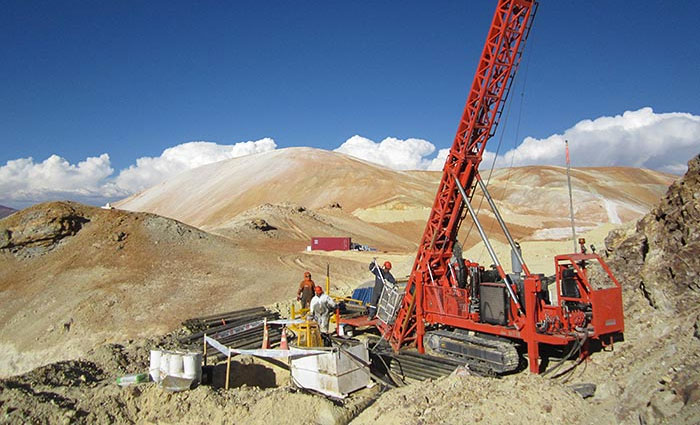
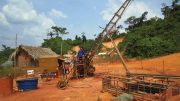
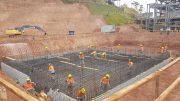
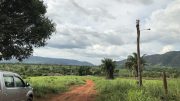
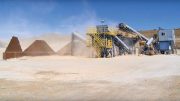
Be the first to comment on "Gold Fields bets big on South America"